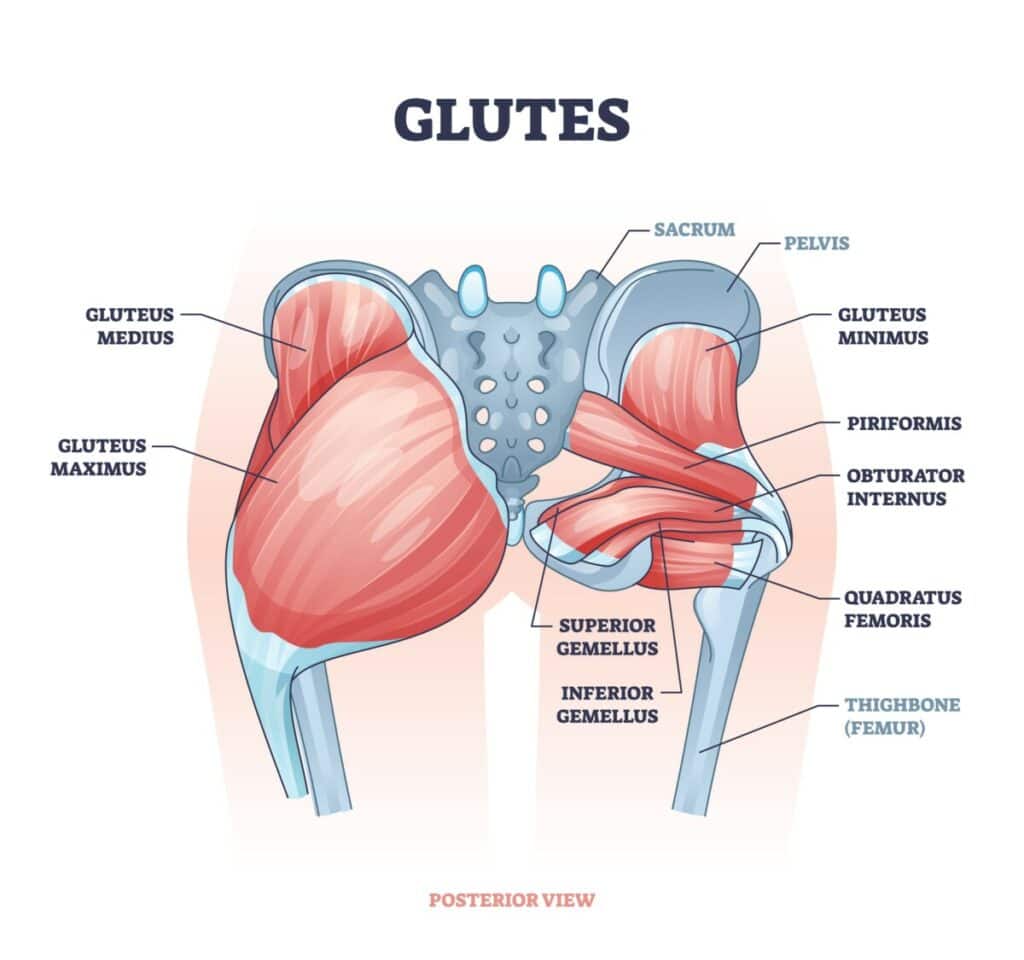Gluteal Tendinopathy Running
- Best Asics Shoes for Flat Feet - October 25, 2024
- Best Running Shoes for Flat Feet - October 22, 2024
- Posterior Tibial Tendonitis - October 21, 2024
What is a Gluteal Tendinopathy?
Gluteal Tendinopathy can become painful and disabling during and after sports or normal daily life activities such as long walks. This condition refers to pain at the outer side of the hip joint. It is often referred to as greater trochanteric pain syndrome.
Gluteal Tendinopathy affects women more than men, particularly those over 40. “Gluteal tendinopathy” indicates pain within the gluteal tendons, particularly Gluteus Medius and Minimus.
Gluteal Tendinopathy was traditionally known as “trochanteric bursitis” due to a bursa between the gluteal tendons and the greater trochanter. The greater trochanter is a bony protrusion palpable at the side of the hip. Nevertheless, recent research suggests that an overload or underload of the gluteal tendons mainly explains lateral hip pain. This leads us to believe that the trochanteric bursa may only play a secondary role in the symptoms.
What causes Gluteal Tendinopathy?
Generally speaking, the majority of tendinopathies in runners occur as a result of progressive tissue overload. A sudden increase in training load (intensity, volume, speed, hill work) may contribute to developing symptoms.
If there are no changes in your running, consider other factors, such as standing or walking for more than usual. Other factors, such as changes in surfaces that you run on or your running shoes, can cause symptoms.

Gluteal Tendinopathy Symptoms?
Pain within the lateral hip region is the most common complaint in runners with gluteal tendinopathy. When the condition is more irritable, symptoms may spread down the outer side of the thigh. It may be difficult to lay on Tendinopathy at night. This can lead to disrupted sleep.
There may be some stiffness in the early morning upon standing up or before starting a run. It is common to improve after some initial stiffness on a run but can worsen the following morning. Some other common aggravating factors include standing on one leg to dress and climbing stairs or hills.
What are the treatment options for Gluteal tendinopathy?
During the initial stages, settling down the symptoms and finding coping strategies for a better night’s sleep is the bestTendinopathyction. Careful consideration should be given to avoiding postures that exert a compressive load on the tendons. For this reason, piriformis or ITB stretches should be avoided as they could potentially exacerbate symptoms. If running brings on the symptoms, a reduction in running volume is recommended.
Gluteal Tendinopathy Exercises
A progressive loading program is prescribed for the gluteal tendons. At first, simple isometric exercises are performed to induce an analgesic response, with long periods of contraction (45 seconds) at an 80% level of effort. After that, heavier exercises should induce positive tissue adaptation on the gluteal tendons. Typical Gluteal Tendinopathy exercises include:
- Side Step-up
- Lateral Lunge
- Resisted Hip Abduction
- Side Planks
- Single-Leg Squats
Before you start running again, it may be beneficial to perform a running analysis to check for any biomechanical issues contributing to your symptoms. Working thoroughly on your gait pattern with a Physiotherapist will ensure this problem does not come back.
Gluteal Tendinopathy Exercises to Avoid
- standing while hanging on one hip
- sitting with crossed legs
- running with a cross-midline foot contact ground pattern
- running on the camber of a road
- running in the same direction around a track
These positions exert a compressive load between the gluteal tendons and the greater trochanter, thus potentially increasing gluteal tendinitis symptoms.
Other treatment options for Gluteal Tendonitis?
An alternative treatment modality for gluteal tendinopathy is Shock Wave Therapy. However, its efficacy may be limited to pain reduction at the initial stages of the pathology.
GTN patches can be used for pain and inflammation reduction.
We are specialists in treating foot conditions such as Gluteal Tendinopathy, and you can see one of our Sports Injury Physios in our clinic in Fulham, South West London. We also offer running gait analysis and biomechanical assessments.
We offer Online Appointments for £60 and Face-to-Face appointments for £85 in our clinics.
Related Articles
Hip Pain Location Diagram – Best Shoes for Plantar Fasciitis – What is Plantar Fasciitis
